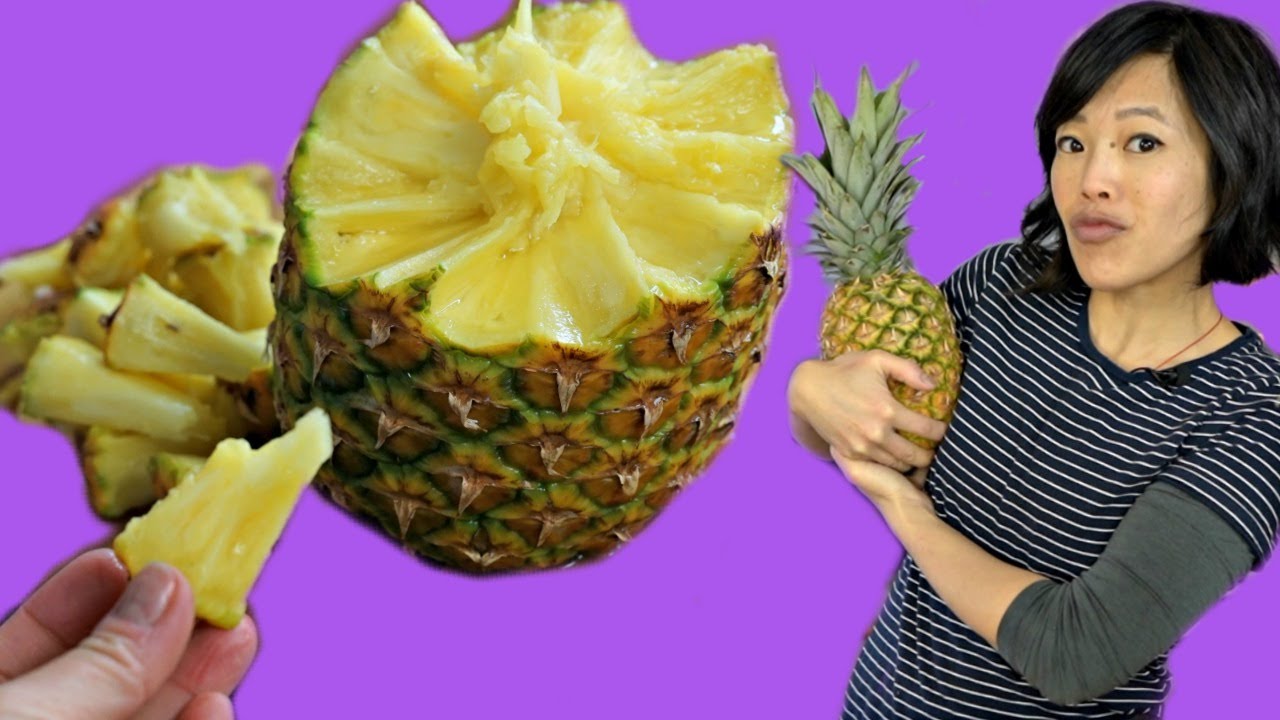An Easy and Fun Guide for Parents: How to Peel a Pineapple
Hello Super Parents! Buckle up as we are about to embark on an exciting tropical adventure in your kitchen. Let’s unlock the secret to peeling a pineapple: that vibrant, juicy and somewhat intimidating fruit that your kids may probably avoid due to its prickly exterior. Fear no more, we have got you covered with a simple, step-by-step method that will get your kids munching on this healthy tropical delight in no time!
Why Pineapple is a Superfruit for Your Super Kids!
Before we dive into the peeling process, let’s briefly talk about why it’s worth including pineapple in your child’s diet. Not only is pineapple a tasty treat, but it’s jam-packed with vitamins, antioxidants, and enzymes that can boost digestion, enhance immune function, and even aid in your child’s growth and development. Now, doesn’t that sound like a super snack?
Getting Ready: Tools Needed for Peeling a Pineapple
There’s no need for any fancy machinery to peel a pineapple. Here are the simple tools you’ll need: A sharp chef’s knife, a cutting board, and a small paring knife or cookie cutter for the ‘eyes’ removal. Ensure safety first, so be sure that little hands are kept away when sharp objects are being handled!
Step 1: Choosing the Perfect Pineapple
The key to delicious pineapple is picking a ripe one. Look for a pineapple that has a fragrant smell, firm but yielding slightly to pressure. Its leaves should be green, and its body should have a consistent golden-brown color.
Step 2: Chop off the Top and Bottom
Stand the pineapple on its base. Using your chef’s knife, chop off the top ‘crown’ and about half an inch from the bottom. This will give you a sturdy base to work with, making the peeling process safer and more efficient.
Step 3: Shearing off the Prickly Skin
With the pineapple standing upright on the board, position your knife at the top edge of the pineapple. Slice down along the curve of the fruit, cutting away the skin in wide strips. Make sure to maintain a good distance from the fruit’s core to minimize wastage!
That’s just the start to your delightful adventure of peeling a pineapple. Continue with this guide to learn more about removing the ‘eyes’ and dicing or slicing your pineapple in the most kid-friendly kind of way!

Step 4: Removing the ‘Eyes’
After shearing off the skin, you’ll notice some small, dark brown spots known as ‘eyes’. These are not edible and hence, need to be removed. Use a small paring knife to cut out these in a V-shaped trench. A tidbit here is to remove them in a diagonal pattern to give your pineapple a spiral look that your kids will love!
Step 5: Slicing the Pineapple
With the skin and ‘eyes’ removed, lay the pineapple horizontally on the cutting board. Slice it into rings of your desired thickness. For smaller kids, you may want to cut these rings into bite-sized pieces to make it easier for them to munch on.
Storing Your Pineapple for Future Snacks
Consuming a whole pineapple may seem like a daunting task for your family. But do not fear, you can store the leftovers in an airtight container and keep it in the refrigerator. They can last up to 5-7 days in the fridge. Now, isn’t that a neat trick to have fresh pineapple at your disposal for nearly a week?
Enjoying Your Pineapple: Recipes and Kid-friendly Treats
Think beyond just eating raw pineapple. There are so many creative and fun ways to relish this fruity gem. From pineapple-infused water to grilled pineapple slices, and everything in between. Imagine adding those tangy pieces in your kid’s pizza or tossing them in a colorful summer salad. Or what about a pineapple smoothie for a refreshing after-school treat?! The possibilities are endless!
Final Thoughts
& there you have it – A comprehensive and fun guide to peeling a pineapple. Parents, we hope this guide has equipped you with the knowledge you need to make pineapple less of an intimidating fruit and more of a go-to healthy snack option for your little ones. Remember, with every prickly challenge comes a juicy reward, just like this tropical wonder fruit. Happy peeling, parents!
Preparing for Peeling Pineapple: A Guide for Parents
As a delightfully tangy, tropical treat, decide one day to prepare pineapple and peeling comes into the picture. This process can be a bit challenging for newbies, particularly when safety is concerned. With your little ones around, here are 5 key things every parent should know:
Selecting the Right Pineapple
First, choosing the right pineapple is crucial. It should be heavy for its size, have light golden brown skin, and emit a sweet aroma at the base. Overripe fruits are too soft and underripe ones too hard, both making peeling difficult and potentially unsafe around children.
Ensuring the Workspace is Safe
Allocate an undisturbed, clean, and flat area for peeling, away from children’s reach. Use a stable cutting board and sharp knife, and always prioritize safety when handling these tools.
Knowing the Correct Peeling Technique
Alongside safety measures, technique is an essential. Starting from the top, slice off about 1/4th inch of the pineapple then do the same for the base. Stand the fruit upright and gently slice the skin off from top to bottom, following the contours of the pineapple.
Teaching Kids about Knife Safety
While witnessing, let your child understand that knives are not toys. Teach the importance of knife safety when peeling pineapples or any type of fruit. Always encourage supervised involvement.
Highlighting the Importance of Cleanliness
Finally, involve your kids in the cleanup process and highlight that maintaining cleanliness in cooking is just as significant as the preparation. Tidying up recognizes the importance of health and food safety.
Remember, practices like peeling pineapple are more than just preparing food. They’re great occasions for imparting life skills to your kids. Happy peeling, parents!
For more great articles please see here. For more information see here
Disclaimer
The articles available via our website provide general information only and we strongly urge readers to exercise caution and conduct their own thorough research and fact-checking. The information presented should not be taken as absolute truth, and, to the maximum extent permitted by law, we will not be held liable for any inaccuracies or errors in the content. It is essential for individuals to independently verify and validate the information before making any decisions or taking any actions based on the articles.




